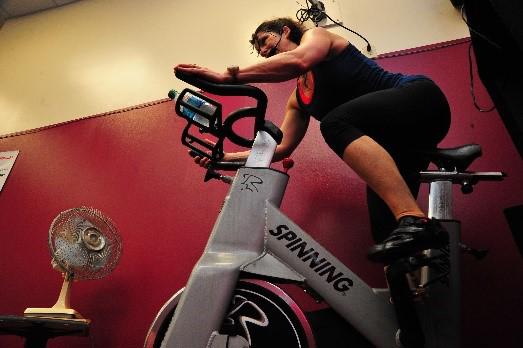Can we change our appetites by simply moving more? PhD Research Student Alice Burgin investigates the science of hunger:
The Hunger Game: physical activity and how we can use it to control our appetite.
Almost two thirds of adults in England are overweight or obese and we know that this population are less likely to meet physical activity recommendations of 150 minutes of moderate-intensity activity every week.
Not meeting these guidelines is associated with many health complications that can lead to premature death and long-term diseases such as coronary heart disease, type II diabetes and cancers. On top of this, the extent of physical inactivity in the UK costs the health services almost £1 billion per year.

There are many reported reasons as to why physical activity guidelines are typically not met by much of the population. One of these reasons is a lack of time, with busy lifestyles meaning that fitting in 150 minutes of exercise each week can be difficult.
This has meant that something called high-intensity intermittent training (HIIT) has become increasingly popular recently, as HIIT involves short bursts of high-intensity exercise (such as 4 x 30 seconds of sprinting on an exercise bike) interspersed with periods of rest.
The nature of HIIT is that it can typically be completed in a shorter amount of time than traditional, moderate-intensity exercise. It is therefore posed as a time-efficient alternative to the recommended physical activity guidelines and is great for our health as it can considerably improve fitness and other health markers including insulin sensitivity, which are all important in lowering our risk of health complications and long-term diseases.

Can HIIT be a way of getting more people more active? Emerging research is suggesting that comparable intensities can be reached with HIIT that doesn’t require any equipment and can be done anywhere – such as running up and down stairs or star jumping in the comfort of your own home!
What’s more, we have seen that people may enjoy this more so than sprinting on an exercise bike for example, and we know that enjoyment is really important in informing how likely people are to continue with that type of exercise.
We know that in the short-term following a single bout of HIIT, interestingly, there may be a reduction in appetite or food intake. It is thought that this happens as when the body exercises at a certain intensity, this can block certain hunger signals that the body would otherwise be making.

If a short bout of exercise (increasing in the energy expended) can reduce food intake (reducing the energy inputted into the body), this may lead to a negative energy balance which is what, over time, leads to weight loss. In the longer term, this could be useful in manipulating body weight and weight loss in an overweight or obese population leading to improvements in public health and current research at the University of Worcester is exploring this further.
Research also suggests that as we become more active, our bodies are better at matching our energy intake to our energy expenditure meaning we are less likely to put on weight and/or become overweight or obese.
This is partly because as we become more active, we are more likely to build muscle and muscle requires a lot of energy at rest to stay functioning. This means that more energy is required for an active body to stay functioning than an inactive body which means that for a certain amount of energy consumed, less of this energy would be stored as fat. Having lots of excess fat can also interfere with hunger signals that are carried around the body, meaning that the messages regarding how full or hungry we feel do not work as well and may cause us to overeat.

Being active has also shown that we may feel fuller for longer following a meal compared with being inactive. Exact reasons why for this at the moment are unclear, but may include better regulation of the hunger and fullness signals that are in the body.
Being more active has also been shown to reduce food cravings that may otherwise encourage us to overeat and store excess energy as body fat. Current research at the University of Worcester is working on furthering our understanding of all of this.
If we are able to shed further light on a type of exercise that is time-efficient, practical and enjoyable for people to do, which may also better their appetite and eating behaviour responses, this could have multiple benefits on public health by increasing physical activity levels and reducing overweight and obesity.
Our current research at the University of Worcester is exploring this, so watch this space!
Alice Burgin is a PhD student in Physical Activity and Health, with a focus on Exercise Metabolism in the School of Sport and Exercise Science
All views expressed in this blog are the Academic’s own and do not represent the views, policies or opinions of the University of Worcester or any of its partners.